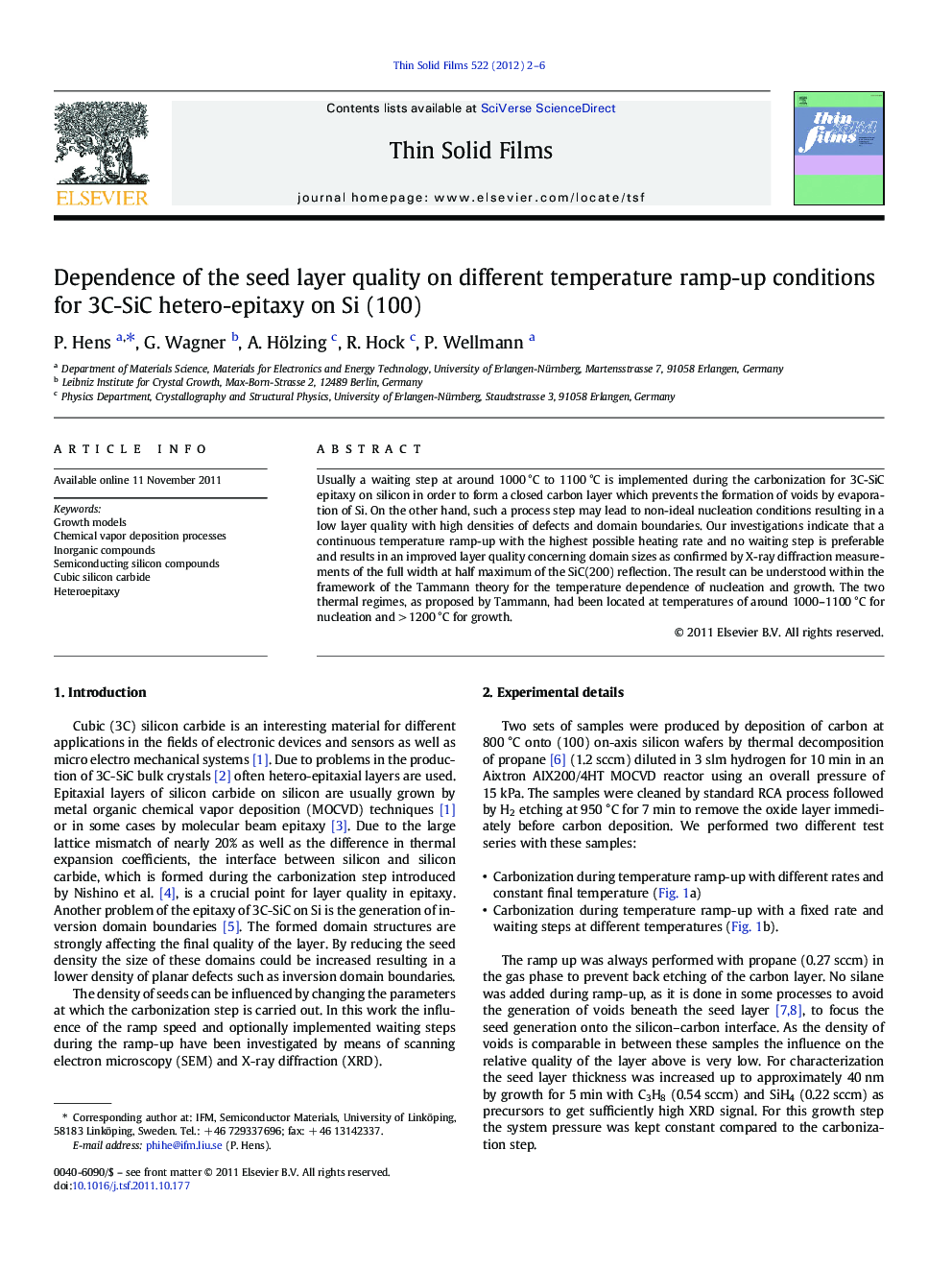| Article ID | Journal | Published Year | Pages | File Type |
|---|---|---|---|---|
| 1666606 | Thin Solid Films | 2012 | 5 Pages |
Usually a waiting step at around 1000 °C to 1100 °C is implemented during the carbonization for 3C-SiC epitaxy on silicon in order to form a closed carbon layer which prevents the formation of voids by evaporation of Si. On the other hand, such a process step may lead to non-ideal nucleation conditions resulting in a low layer quality with high densities of defects and domain boundaries. Our investigations indicate that a continuous temperature ramp-up with the highest possible heating rate and no waiting step is preferable and results in an improved layer quality concerning domain sizes as confirmed by X-ray diffraction measurements of the full width at half maximum of the SiC(200) reflection. The result can be understood within the framework of the Tammann theory for the temperature dependence of nucleation and growth. The two thermal regimes, as proposed by Tammann, had been located at temperatures of around 1000–1100 °C for nucleation and > 1200 °C for growth.
